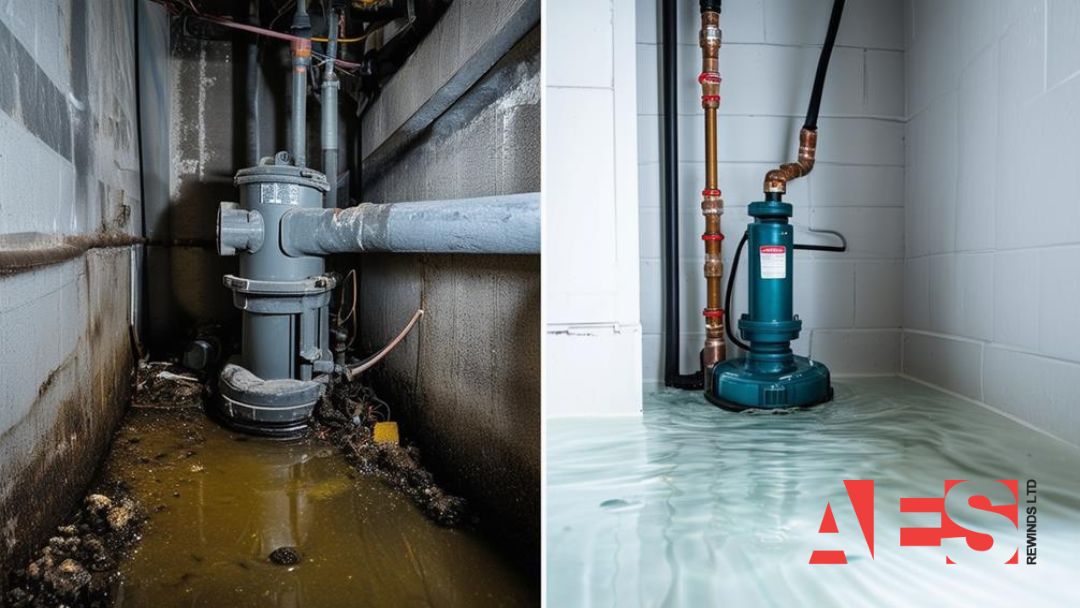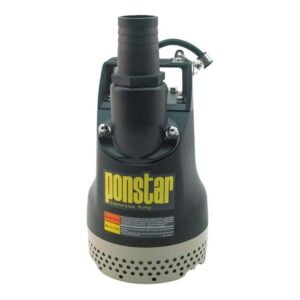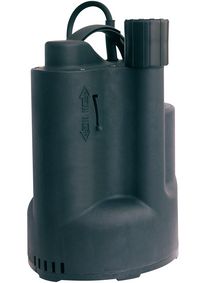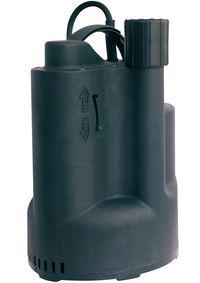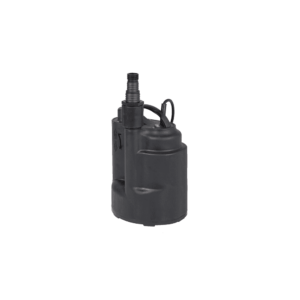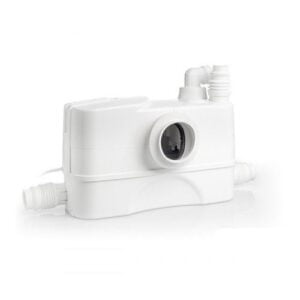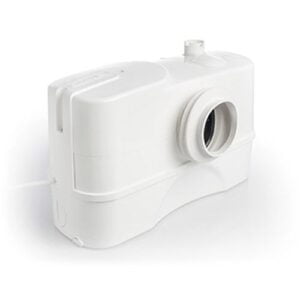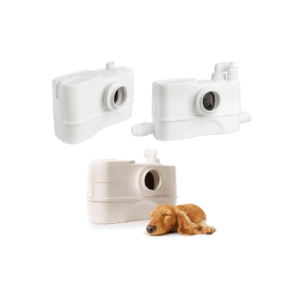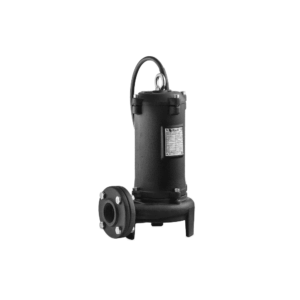For your home, you its possible you will need both a sewage pump and a sump pump. Sewage pumps are designed to handle solid waste and wastewater, ensuring backups are prevented. On the other hand, sump pumps specific purpose is to manage clear or gray water and prevent basement flooding. While both are essential for maintaining a healthy living environment, they have distinct functions, types, and design requirements. Keep reading to get a better grasp on how to choose the right pump for your needs, understand their different maintenance needs, and learn more about when it’s time to replace them.
Key Takeaways
- Sewage pumps are designed for handling solid waste and wastewater, whereas sump pumps manage clear or gray water to prevent flooding.
- Sump pumps are ideal for DIY installation but require annual cleaning for proper maintenance.
- There are different types of sewage pumps like solid-handling, grinder, and effluent pumps, each serving specific purposes.
- Proper pump capacity and design compatibility are crucial to ensure efficient operation and a prolonged lifespan.
- Timely replacement of pumps is necessary due to operational issues, wear, and tear, and performance decline.
Sewage Pump Vs. Sump Pump
When it comes to managing water in your home, it’s important to distinguish between sewage pumps and sump pumps, as each serves a unique purpose in maintaining the integrity of your plumbing and preventing potential hazards.
Sewage pumps are designed to handle solid waste and wastewater, ensuring that sewage backups are prevented in your property. They’re particularly important for homes with sewage disposal needs, requiring professional installation and more regular maintenance due to the nature of the waste they handle.
On the other hand, sump pumps are specialised for managing clear or gray water, preventing flooding in basements or crawl spaces. While sewage pumps focus on solid waste disposal, sump pumps prioritise flood prevention, making them ideal for DIY installation and requiring annual cleaning and servicing to maintain their functionality.
Understanding the distinctions between these two pumps is essential to guarantee the proper functioning of your home’s plumbing system.
Key Differences and Usage
When managing water in your home, understanding the key differences and usage between sewage pumps and sump pumps is important to guarantee effective water management and prevent potential hazards. Both pumps serve distinct purposes, ensuring the integrity of your home’s plumbing and preventing common water-related issues.
Sewage pumps are specifically designed to handle solid waste and wastewater, making them essential for preventing sewage backups in your property. They’re typically required in scenarios where solid waste needs to be pumped from one location to another. This might include homes with below sewer level components, such as a basement bathroom. Sewage pumps are engineered to manage this complex task efficiently, ensuring that waste is safely and reliably moved through the system.
On the other hand, sump pumps are designed to manage clear or gray water that accumulates in basements or crawl spaces. Their primary function is to prevent flooding and damage by pumping excess water away from these areas. Sump pumps are important in homes prone to flooding or water seepage, ensuring that water doesn’t stagnate in these areas.
Pump Types and Functions
If you have a basement or crawl space, understanding the different types of sewage and sump pumps available can help you determine the right solution for your home’s specific water management needs.
Sewage pumps, for instance, come in three main varieties: solid handling pumps (also known as sewage ejector pumps), grinder pumps, and effluent pumps. Solid handling pumps are designed to handle raw sewage, which typically includes larger solid particles. Grinder pumps, on the other hand, can break down these solids into smaller pieces before pumping. Effluent pumps, the most common type, focus solely on pumping liquids and are used in septic systems.
Sump pumps, by contrast, are specifically engineered to manage clear or gray water, keeping your basement or crawl space from flooding.
These distinctions are important for successful water management and property protection. Knowing when to use the appropriate pump can spare you from costly damage and ensure long-term system reliability.
It’s essential to consult with experts who can assess your specific situation and guide you in selecting the right pump to meet your unique needs.
Design and Capacity Considerations
While the distinction in pump types and functions guides your initial selection, the successful operation of your water management system also relies on a deep understanding of design and capacity considerations.
For sewage pumps, design factors revolve around their ability to handle solid waste and wastewater, whereas sump pumps focus on managing excessive water in basements.
Key Design and Capacity Considerations
- Capacity Alignment: Guarantee the pump capacity is aligned with your specific needs. A pump that’s too small won’t effectively manage water, while one that’s too large will be inefficient and wasteful.
- Design Compatibility: Verify that the pump design is compatible with your installation environment, including factors such as space constraints, water flow, and electrical supply.
- Maintenance Accessibility: Consider pumps with easy maintenance access to ensure that servicing can be performed efficiently and effectively, reducing downtime and prolonging the pump’s lifespan.
Common Signs a Replacement is Required
You need to be alert for specific indicators that signal the need to replace your sewage or sump pump, ensuring timely action to prevent more extensive and costlier issues. These pumps are vital for maintaining a healthy and safe living environment, and neglecting early warning signs can lead to grim consequences.
Here are three common signs that indicate the need for replacement:
- Operational Abnormalities: Pay attention to unusual noises, frequent clogging, or sewage backup in your property for sewage pumps. For sump pumps, watch out for continuous operation, strange noises, or failure to activate during heavy rain. These irregularities may indicate a pump nearing failure.
- Visual and Sensory Indicators: Keep an eye out for visible signs of wear and tear, decreased efficiency, or persistent malfunctions. Additionally, be aware of foul odours or water accumulation around the pump area, as these can signal impending failure.
- Performance Decline: Monitor your pump’s performance and energy consumption. A sudden increase in energy consumption or decreased pumping efficiency may indicate that your pump is struggling and needs to be replaced.
Maintenance and Installation Needs
When it comes to maintaining and installing sewage and sump pumps, understanding their unique needs is essential to ensuring they run efficiently and effectively.
Vital decisions about your pumps can save you from catastrophic property damage and costly repairs. Sewage pumps, handling solid waste, demand more attention, often requiring professional installation and regular checks for blockages, proper flow, and grinder maintenance.
Meanwhile, sump pumps that tackle excess water in basements are generally easier to install and can be more DIY-friendly. Conversely, they need annual servicing and should be tested before rainy seasons to avert flooding.
It’s essential to remember that both types of pumps should be installed by experienced professionals to guarantee top performance and longevity. By being proactive about these distinct demands, you can stay ahead of potential issues and keep your home safe and secure.
Choosing the Right Pump
When it comes to managing water in your home, two essential tools are sewage pumps and sump pumps. While both pumps deal with water-related issues, they serve different purposes.
A sump pump is typically installed in a basement or crawlspace and is designed to prevent flooding by removing excess water that accumulates around the foundation of a house. This pump is activated by a float switch that triggers the pump to turn on when water levels reach a certain point.
-
%27%20fill-opacity%3D%27.5%27%3E%3Cellipse%20fill%3D%22%23272725%22%20fill-opacity%3D%22.5%22%20rx%3D%221%22%20ry%3D%221%22%20transform%3D%22rotate(-5.6%201625.4%20-1372.3)%20scale(52.64483%20121.72137)%22%2F%3E%3Cellipse%20fill%3D%22%23fff%22%20fill-opacity%3D%22.5%22%20rx%3D%221%22%20ry%3D%221%22%20transform%3D%22matrix(-13.96388%20-298.50169%2052.69032%20-2.46485%20262%20127.9)%22%2F%3E%3Cellipse%20fill%3D%22%23fff%22%20fill-opacity%3D%22.5%22%20rx%3D%221%22%20ry%3D%221%22%20transform%3D%22matrix(-9.00505%20298.69241%20-42.15143%20-1.2708%2034.6%20121.9)%22%2F%3E%3Cellipse%20fill%3D%22%23454642%22%20fill-opacity%3D%22.5%22%20rx%3D%221%22%20ry%3D%221%22%20transform%3D%22matrix(28.07716%20-1.9693%206.02718%2085.93193%20141.5%20149)%22%2F%3E%3C%2Fg%3E%3C%2Fsvg%3E) Koshin Ponstar PX 55011 110v Automatic Submersible Pump£349.15 +VAT
Koshin Ponstar PX 55011 110v Automatic Submersible Pump£349.15 +VAT -
%27%20fill-opacity%3D%27.5%27%3E%3Cellipse%20fill%3D%22%23272725%22%20fill-opacity%3D%22.5%22%20rx%3D%221%22%20ry%3D%221%22%20transform%3D%22rotate(-5.6%201625.4%20-1372.3)%20scale(52.64483%20121.72137)%22%2F%3E%3Cellipse%20fill%3D%22%23fff%22%20fill-opacity%3D%22.5%22%20rx%3D%221%22%20ry%3D%221%22%20transform%3D%22matrix(-13.96388%20-298.50169%2052.69032%20-2.46485%20262%20127.9)%22%2F%3E%3Cellipse%20fill%3D%22%23fff%22%20fill-opacity%3D%22.5%22%20rx%3D%221%22%20ry%3D%221%22%20transform%3D%22matrix(-9.00505%20298.69241%20-42.15143%20-1.2708%2034.6%20121.9)%22%2F%3E%3Cellipse%20fill%3D%22%23454642%22%20fill-opacity%3D%22.5%22%20rx%3D%221%22%20ry%3D%221%22%20transform%3D%22matrix(28.07716%20-1.9693%206.02718%2085.93193%20141.5%20149)%22%2F%3E%3C%2Fg%3E%3C%2Fsvg%3E) Koshin Ponstar PX 55011 110v Manual Submersible Pump£321.55 +VAT
Koshin Ponstar PX 55011 110v Manual Submersible Pump£321.55 +VAT -
%27%20fill-opacity%3D%27.5%27%3E%3Cellipse%20fill%3D%22%23272725%22%20fill-opacity%3D%22.5%22%20rx%3D%221%22%20ry%3D%221%22%20transform%3D%22rotate(-5.6%201625.4%20-1372.3)%20scale(52.64483%20121.72137)%22%2F%3E%3Cellipse%20fill%3D%22%23fff%22%20fill-opacity%3D%22.5%22%20rx%3D%221%22%20ry%3D%221%22%20transform%3D%22matrix(-13.96388%20-298.50169%2052.69032%20-2.46485%20262%20127.9)%22%2F%3E%3Cellipse%20fill%3D%22%23fff%22%20fill-opacity%3D%22.5%22%20rx%3D%221%22%20ry%3D%221%22%20transform%3D%22matrix(-9.00505%20298.69241%20-42.15143%20-1.2708%2034.6%20121.9)%22%2F%3E%3Cellipse%20fill%3D%22%23454642%22%20fill-opacity%3D%22.5%22%20rx%3D%221%22%20ry%3D%221%22%20transform%3D%22matrix(28.07716%20-1.9693%206.02718%2085.93193%20141.5%20149)%22%2F%3E%3C%2Fg%3E%3C%2Fsvg%3E) Koshin Ponstar PX 55022 230v Automatic Submersible Pump£349.15 +VAT
Koshin Ponstar PX 55022 230v Automatic Submersible Pump£349.15 +VAT -
%27%20fill-opacity%3D%27.5%27%3E%3Cellipse%20fill%3D%22%23272725%22%20fill-opacity%3D%22.5%22%20rx%3D%221%22%20ry%3D%221%22%20transform%3D%22rotate(-5.6%201625.4%20-1372.3)%20scale(52.64483%20121.72137)%22%2F%3E%3Cellipse%20fill%3D%22%23fff%22%20fill-opacity%3D%22.5%22%20rx%3D%221%22%20ry%3D%221%22%20transform%3D%22matrix(-13.96388%20-298.50169%2052.69032%20-2.46485%20262%20127.9)%22%2F%3E%3Cellipse%20fill%3D%22%23fff%22%20fill-opacity%3D%22.5%22%20rx%3D%221%22%20ry%3D%221%22%20transform%3D%22matrix(-9.00505%20298.69241%20-42.15143%20-1.2708%2034.6%20121.9)%22%2F%3E%3Cellipse%20fill%3D%22%23454642%22%20fill-opacity%3D%22.5%22%20rx%3D%221%22%20ry%3D%221%22%20transform%3D%22matrix(28.07716%20-1.9693%206.02718%2085.93193%20141.5%20149)%22%2F%3E%3C%2Fg%3E%3C%2Fsvg%3E) Koshin Ponstar PX 55022 230v Manual Submersible Pump£321.55 +VAT
Koshin Ponstar PX 55022 230v Manual Submersible Pump£321.55 +VAT -
 Koshin Ponstar PX Submersible PumpsFrom £321.55
Koshin Ponstar PX Submersible PumpsFrom £321.55 -
 Pentair Flotec Compac 200 (DPC) 230v Submersible Pump£243.58 +VAT
Pentair Flotec Compac 200 (DPC) 230v Submersible Pump£243.58 +VAT -
 Pentair Flotec Compac 150 110v Submersible Pump£214.60 +VAT
Pentair Flotec Compac 150 110v Submersible Pump£214.60 +VAT -
 Pentair Flotec Compac 150 230v Submersible Pump£214.60 +VAT
Pentair Flotec Compac 150 230v Submersible Pump£214.60 +VAT -
%27%20fill-opacity%3D%27.5%27%3E%3Cellipse%20fill%3D%22%23575757%22%20fill-opacity%3D%22.5%22%20rx%3D%221%22%20ry%3D%221%22%20transform%3D%22matrix(-8.17173%20-72.82652%2054.25951%20-6.08836%20144.6%20160.6)%22%2F%3E%3Cellipse%20fill%3D%22%23585858%22%20fill-opacity%3D%22.5%22%20rx%3D%221%22%20ry%3D%221%22%20transform%3D%22matrix(-3.63357%20-42.38378%2030.71439%20-2.63315%20146%20162)%22%2F%3E%3Cellipse%20fill%3D%22%23fff%22%20fill-opacity%3D%22.5%22%20rx%3D%221%22%20ry%3D%221%22%20transform%3D%22rotate(80.1%2044.3%20233.8)%20scale(298.82813%2083.61165)%22%2F%3E%3Cellipse%20fill%3D%22%23fff%22%20fill-opacity%3D%22.5%22%20rx%3D%221%22%20ry%3D%221%22%20transform%3D%22matrix(8.617%20269.45255%20-56.88968%201.81931%2047.6%20156.6)%22%2F%3E%3C%2Fg%3E%3C%2Fsvg%3E) Pentair Flotec Compac 150 & 200 Submersible (Sump) PumpsFrom £214.60
Pentair Flotec Compac 150 & 200 Submersible (Sump) PumpsFrom £214.60
On the other hand, a sewage pump is responsible for removing wastewater from areas such as bathrooms, laundry rooms, and kitchens. This pump is more powerful than a sump pump and can handle solids and debris that would clog a sump pump.
-
 Dab Genix Comfort 130 Self Contained Toilet Waste Pumping Unit£465.59 +VAT
Dab Genix Comfort 130 Self Contained Toilet Waste Pumping Unit£465.59 +VAT -
 Dab Genix Comfort 110 Self Contained Toilet Waste Pumping Unit£405.21 +VAT
Dab Genix Comfort 110 Self Contained Toilet Waste Pumping Unit£405.21 +VAT -
 Dab Genix 130 Self Contained Toilet Waste Pumping Unit£413.84 +VAT
Dab Genix 130 Self Contained Toilet Waste Pumping Unit£413.84 +VAT -
 Dab Genix 110 Self Contained Toilet Waste Pumping Unit£358.64 +VAT
Dab Genix 110 Self Contained Toilet Waste Pumping Unit£358.64 +VAT -
%27%20fill-opacity%3D%27.5%27%3E%3Cellipse%20fill%3D%22%23c5c5c5%22%20fill-opacity%3D%22.5%22%20rx%3D%221%22%20ry%3D%221%22%20transform%3D%22matrix(44.57337%2087.7834%20-53.40241%2027.1159%20137.4%20164.5)%22%2F%3E%3Cellipse%20fill%3D%22%23ababab%22%20fill-opacity%3D%22.5%22%20rx%3D%221%22%20ry%3D%221%22%20transform%3D%22matrix(24.61117%2020.26207%20-15.10722%2018.34987%20155.5%20200.5)%22%2F%3E%3Cellipse%20fill%3D%22%23d3d3d3%22%20fill-opacity%3D%22.5%22%20rx%3D%221%22%20ry%3D%221%22%20transform%3D%22matrix(-41.54463%20-3.2771%202.64928%20-33.58563%20190.3%20102.7)%22%2F%3E%3Cellipse%20fill%3D%22%23fff%22%20fill-opacity%3D%22.5%22%20rx%3D%221%22%20ry%3D%221%22%20transform%3D%22rotate(2.4%20-3658%206905.2)%20scale(63.75166%20274.48239)%22%2F%3E%3C%2Fg%3E%3C%2Fsvg%3E) Dab Genix Self Contained Toilet Waste Pumping UnitsFrom £358.64
Dab Genix Self Contained Toilet Waste Pumping UnitsFrom £358.64 -
%22%20transform%3D%22translate(.6%20.6)%20scale(1.17188)%22%20fill-opacity%3D%22.5%22%3E%3Cellipse%20fill%3D%22%23636363%22%20rx%3D%221%22%20ry%3D%221%22%20transform%3D%22rotate(94%20.6%20128.5)%20scale(72.6996%2042.49951)%22%2F%3E%3Cellipse%20fill%3D%22%236b6b6b%22%20rx%3D%221%22%20ry%3D%221%22%20transform%3D%22matrix(-20.54184%20-4.05224%207.65928%20-38.82684%20128%20146.7)%22%2F%3E%3Cellipse%20fill%3D%22%23fff%22%20cx%3D%2227%22%20cy%3D%2279%22%20rx%3D%2284%22%20ry%3D%2284%22%2F%3E%3Cellipse%20fill%3D%22%23fff%22%20cx%3D%22226%22%20cy%3D%2271%22%20rx%3D%2281%22%20ry%3D%2281%22%2F%3E%3C%2Fg%3E%3C%2Fsvg%3E) Oliju SGR 50.220 400v Sewage Grinder Submersible Pump£914.51 +VAT
Oliju SGR 50.220 400v Sewage Grinder Submersible Pump£914.51 +VAT -
%22%20transform%3D%22translate(.6%20.6)%20scale(1.17188)%22%20fill-opacity%3D%22.5%22%3E%3Cellipse%20fill%3D%22%23636363%22%20rx%3D%221%22%20ry%3D%221%22%20transform%3D%22rotate(94%20.6%20128.5)%20scale(72.6996%2042.49951)%22%2F%3E%3Cellipse%20fill%3D%22%236b6b6b%22%20rx%3D%221%22%20ry%3D%221%22%20transform%3D%22matrix(-20.54184%20-4.05224%207.65928%20-38.82684%20128%20146.7)%22%2F%3E%3Cellipse%20fill%3D%22%23fff%22%20cx%3D%2227%22%20cy%3D%2279%22%20rx%3D%2284%22%20ry%3D%2284%22%2F%3E%3Cellipse%20fill%3D%22%23fff%22%20cx%3D%22226%22%20cy%3D%2271%22%20rx%3D%2281%22%20ry%3D%2281%22%2F%3E%3C%2Fg%3E%3C%2Fsvg%3E) Oliju SGR 40.150 400v Sewage Grinder Submersible Pump£654.56 +VAT
Oliju SGR 40.150 400v Sewage Grinder Submersible Pump£654.56 +VAT -
%22%20transform%3D%22translate(.6%20.6)%20scale(1.17188)%22%20fill-opacity%3D%22.5%22%3E%3Cellipse%20fill%3D%22%23636363%22%20rx%3D%221%22%20ry%3D%221%22%20transform%3D%22rotate(94%20.6%20128.5)%20scale(72.6996%2042.49951)%22%2F%3E%3Cellipse%20fill%3D%22%236b6b6b%22%20rx%3D%221%22%20ry%3D%221%22%20transform%3D%22matrix(-20.54184%20-4.05224%207.65928%20-38.82684%20128%20146.7)%22%2F%3E%3Cellipse%20fill%3D%22%23fff%22%20cx%3D%2227%22%20cy%3D%2279%22%20rx%3D%2284%22%20ry%3D%2284%22%2F%3E%3Cellipse%20fill%3D%22%23fff%22%20cx%3D%22226%22%20cy%3D%2271%22%20rx%3D%2281%22%20ry%3D%2281%22%2F%3E%3C%2Fg%3E%3C%2Fsvg%3E) Oliju SGR 50.220 Automatic 230v Sewage Grinder Submersible Pump£1,080.80 +VAT
Oliju SGR 50.220 Automatic 230v Sewage Grinder Submersible Pump£1,080.80 +VAT -
%22%20transform%3D%22translate(.6%20.6)%20scale(1.17188)%22%20fill-opacity%3D%22.5%22%3E%3Cellipse%20fill%3D%22%23636363%22%20rx%3D%221%22%20ry%3D%221%22%20transform%3D%22rotate(94%20.6%20128.5)%20scale(72.6996%2042.49951)%22%2F%3E%3Cellipse%20fill%3D%22%236b6b6b%22%20rx%3D%221%22%20ry%3D%221%22%20transform%3D%22matrix(-20.54184%20-4.05224%207.65928%20-38.82684%20128%20146.7)%22%2F%3E%3Cellipse%20fill%3D%22%23fff%22%20cx%3D%2227%22%20cy%3D%2279%22%20rx%3D%2284%22%20ry%3D%2284%22%2F%3E%3Cellipse%20fill%3D%22%23fff%22%20cx%3D%22226%22%20cy%3D%2271%22%20rx%3D%2281%22%20ry%3D%2281%22%2F%3E%3C%2Fg%3E%3C%2Fsvg%3E) Oliju SGR 50.220 Manual UAL 230v Sewage Grinder Submersible Pump£1,059.41 +VAT
Oliju SGR 50.220 Manual UAL 230v Sewage Grinder Submersible Pump£1,059.41 +VAT
Frequently Asked Questions
What’s the difference between a Sewage Pump and a Sump Pump?
A sewage pump is designed to handle wastewater containing solids and is typically used to move sewage from toilets and other drainage systems to the main sewer line. It’s built to handle larger debris and is often found in basements or lower levels of buildings.
In contrast, a sump pump removes excess water from a sump pit, usually located in basements or crawl spaces. Its primary function is to prevent flooding by pumping out accumulated groundwater or rainwater. Sump pumps are not designed to handle sewage or solid waste and are generally smaller than sewage pumps.
Can I Use a Sump Pump to Handle Raw Sewage and Solid Waste?
No, you can’t use a sump pump to handle raw sewage and solid waste. It’s designed to pump clean or slightly contaminated water, not solids, which would lead to clogs and malfunction.
What Are the Recommended Maintenance Schedules for Each Pump Type?
Maintenance for your sewage pump is necessary every six months to guarantee peak functionality and prevent clogs. For your sump pump, annual checks of the components and testing the pump are vital to ensure smooth functioning.
How Do I Determine the Appropriate Pump Size for My Specific Property?
To determine the right pump size for your property, consider the amount of sewage or water accumulation, calculate the head (vertical distance), factor in the pipe diameter and length, and consult with a pump expert for guidance.
Can Sewage Pumps be used as Sump Pumps?
While a sewage pump can technically be used as a sump pump, it’s not recommended. Although sewage pumps can handle sump duties when properly sized and equipped, they are significantly more expensive than sump pumps.
Sump pumps are specifically designed and priced for basement water removal, making them the more cost-effective choice. Conversely, sump pumps cannot be used for sewage applications as they lack the necessary capabilities to handle solid waste and aggregates.
Conclusion
Now that you’ve explored the key differences between sewage pumps and sump pumps, you’re better equipped to make an informed decision for your specific needs. Remember to take into account factors like pump type, design, and capacity to make sure you’re getting the right fit.
By prioritising maintenance and installation, you’ll be able to enjoy a reliable and efficient pumping system that keeps your home or business running smoothly.

